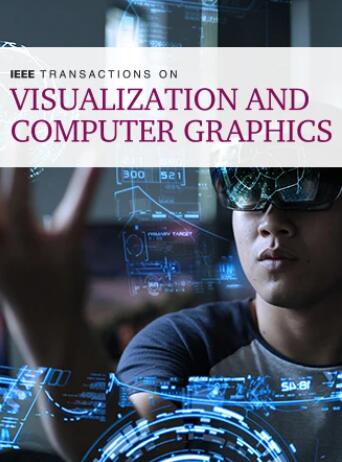STTAR:使用现成的增强现实头戴式显示器跟踪手术工具
IF 6.5
1区 计算机科学
Q1 COMPUTER SCIENCE, SOFTWARE ENGINEERING
IEEE Transactions on Visualization and Computer Graphics
Pub Date : 2022-08-17
DOI:10.48550/arXiv.2208.08880
引用次数: 9
摘要
将增强现实(AR)用于导航目的已显示出在执行外科手术期间帮助医生是有益的。这些应用通常需要知道手术工具和患者的姿势,以提供外科医生在执行任务期间可以使用的视觉信息。现有的医疗级跟踪系统使用放置在手术室(OR)内的红外相机来识别附着在感兴趣物体上的反光标记,并计算其姿势。一些商用AR头戴式显示器(HMD)使用类似的相机进行自我定位、手部跟踪和估计物体深度。这项工作提出了一个框架,该框架使用AR HMD的内置摄像头来实现对反光标记的精确跟踪,而无需将任何额外的电子设备集成到HMD中。所提出的框架可以同时跟踪多个工具,而不需要事先了解它们的几何形状,并且只需要在头戴式耳机和工作站之间建立本地网络。我们的结果表明,标记物的跟踪和检测可以实现,横向平移的精度为0.09±0.06 mm,纵向平移为0.42±0.32 mm,绕垂直轴旋转的精度为0.80±0.39°。此外,为了展示所提出的框架的相关性,我们评估了该系统在外科手术中的表现。该用例旨在复制骨科手术中k线插入的场景。为了进行评估,向7名外科医生提供了视觉导航,并要求他们使用拟议的框架进行24次注射。第二项由十名参与者参与的研究旨在调查该框架在更一般场景中的能力。这些研究的结果提供了与文献中报道的基于AR的导航程序相当的准确性。本文章由计算机程序翻译,如有差异,请以英文原文为准。
STTAR: Surgical Tool Tracking using off-the-shelf Augmented Reality Head-Mounted Displays
The use of Augmented Reality (AR) for navigation purposes has shown beneficial in assisting physicians during the performance of surgical procedures. These applications commonly require knowing the pose of surgical tools and patients to provide visual information that surgeons can use during the performance of the task. Existing medical-grade tracking systems use infrared cameras placed inside the Operating Room (OR) to identify retro-reflective markers attached to objects of interest and compute their pose. Some commercially available AR Head-Mounted Displays (HMDs) use similar cameras for self-localization, hand tracking, and estimating the objects' depth. This work presents a framework that uses the built-in cameras of AR HMDs to enable accurate tracking of retro-reflective markers without the need to integrate any additional electronics into the HMD. The proposed framework can simultaneously track multiple tools without having previous knowledge of their geometry and only requires establishing a local network between the headset and a workstation. Our results show that the tracking and detection of the markers can be achieved with an accuracy of 0.09±0.06 mm on lateral translation, 0.42 ±0.32 mm on longitudinal translation and 0.80 ±0.39° for rotations around the vertical axis. Furthermore, to showcase the relevance of the proposed framework, we evaluate the system's performance in the context of surgical procedures. This use case was designed to replicate the scenarios of k-wire insertions in orthopedic procedures. For evaluation, seven surgeons were provided with visual navigation and asked to perform 24 injections using the proposed framework. A second study with ten participants served to investigate the capabilities of the framework in the context of more general scenarios. Results from these studies provided comparable accuracy to those reported in the literature for AR-based navigation procedures.
求助全文
通过发布文献求助,成功后即可免费获取论文全文。
去求助
来源期刊

IEEE Transactions on Visualization and Computer Graphics
工程技术-计算机:软件工程
CiteScore
10.40
自引率
19.20%
发文量
946
审稿时长
4.5 months
期刊介绍:
TVCG is a scholarly, archival journal published monthly. Its Editorial Board strives to publish papers that present important research results and state-of-the-art seminal papers in computer graphics, visualization, and virtual reality. Specific topics include, but are not limited to: rendering technologies; geometric modeling and processing; shape analysis; graphics hardware; animation and simulation; perception, interaction and user interfaces; haptics; computational photography; high-dynamic range imaging and display; user studies and evaluation; biomedical visualization; volume visualization and graphics; visual analytics for machine learning; topology-based visualization; visual programming and software visualization; visualization in data science; virtual reality, augmented reality and mixed reality; advanced display technology, (e.g., 3D, immersive and multi-modal displays); applications of computer graphics and visualization.
 求助内容:
求助内容: 应助结果提醒方式:
应助结果提醒方式:


